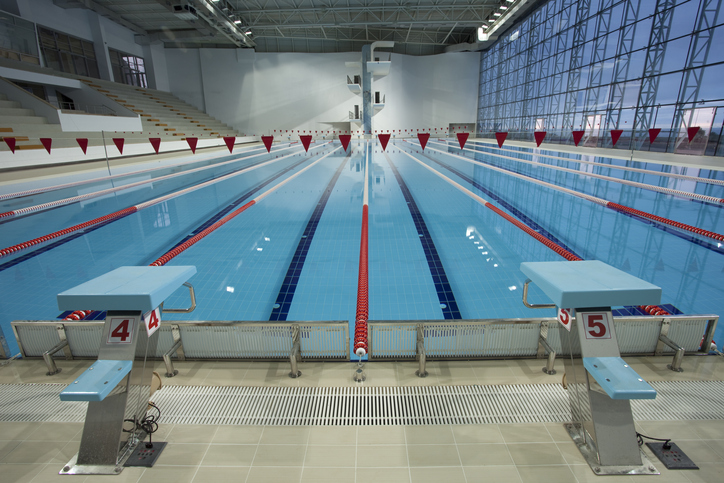Why swimming pools beat innovation centres

Kevin Richardson of Local Academy uses a deliberately stylised case study to raise wider issues about how different projects of different types can be evaluated fairly against each other when there is never enough to go around to pay for everything that needs to happen.
Different competitive public funding programmes appear recently to have favoured swimming pools at the expense of innovation centres. What are the underlying reasons and what can be done to swing the pendulum?
Swimming pools are accessible. They are usually found near large residential or retail areas, or near to main bus routes and stations. They open for long hours and especially so at the weekend. Swimmers pay a few quid and simply walk inside. Innovation centres very often are conversely based on business parks or otherwise similarly inaccessible or uninviting university campuses. Many innovation centres are open only during standard business hours and are usually closed at the weekend. Visitors are often screened at imposing reception desks and are then required to sign in and wear a security badge. Some even have security guards on the door. Locals are even sometimes actively discouraged from simply looking inside the facilities for which their hard earned taxes have paid. Ever seen an Innovation Centre with a sign outside displaying a message of ‘Everyone welcome. Do please come inside?’
Everyone knows what happens in a swimming pool. They do what it says on the tin. People swim and splash about in the water. But few local people know with any degree of certainty what happens inside an innovation centre, partly of course, because many have never been inside one. They have strange names like ‘Centre for Innovation and Entrepreneurship’ (or similar) which appeal only to a very selected and inward looking audience, but sound to most normal people much like psychobabble or jabberwocky. Why aren’t they called something meaningful like ‘New Jobs Factory’? Local people might then better understand and better value what happens inside.
Swimming pools attract people of all ages and backgrounds. From babes in their parents arms to first school kids learning to swim as part of the national curriculum. Senior citizens use them to stay agile and socialise. Many swimming pools have sessions dedicated especially to widening participation. Nor do you need a degree or other high level qualification to dive into the deep end. What sections of our communities frequent innovation centres other than supposedly better educated, or other people with cash to invest, or firms looking to make better profits? How many innovation centres run successful and then widely publicise ‘out-reach’ and ‘in-reach’ engagement programmes involving young people, for they are, of course, the innovators of tomorrow? Could schools be invited to use innovation centres to deliver sessions to enthralled and wide eyed young learners? Indeed, heaven forbid, why not base an innovation centre inside a school? It’s not rocket science, is it?
The purposes of swimming pools are pretty clear. People learn to swim in them and others just want to have simple fun splashing about in the water. Others wish more deliberately to get fitter, healthier or just lose some weight. Some doctors even prescribe them as medicine. A few swimmers even want to compete against other swimmers. Those who favour innovation centres may know themselves what is its intended purpose but how widely and clearly do they articulate sufficiently understandable reasons to a wider audience using language that is equally accessible to all? How well do they know what local people think about what it is they are doing? How often and what questions do they ask them? For it is, of course, the duty of the communicator to communicate. Not the other way around.
It is relatively easy to measure how well a swimming pool is performing e.g. numbers of swimmers, ticket sales, running costs etc. Innovation centres have an understandably longer term and broader perspective but objectives and terms such as patents lodged, increases in national productivity or GDP, or even ‘clusters,’ mean little other than to a very narrow and inward looking audience. How can innovation centres and their funders much more clearly explain to a much wider audience what it is they are doing inside and how much it is benefitting local communities and people?
Members or Parliament and other strong local leaders have clearly had an increasing role in prioritising funding bids when faced with the inevitable long list of competing demands for inevitably limited funds. Swimming pools and innovation centres both provide different forms of good. Those who favour greater priority for funding for innovation centres need to justify to those leaders why their proposals provide benefits of equal (if different) importance. Language is critical and a different lexicon needs to be used and better understood by different audiences. Simply complaining wistfully that these leaders do not understand the value of innovation centres is simply and lazily admitting that not enough work has been done to communicate the undoubted benefits of innovation centres. Importantly, the whole framework which underpins the designs of those centres need to change to improve performance in things that really matter including especially; accessibility, branding, inclusion, outreach, and, critically, providing well paid and green local jobs. Only then will innovation centres help local leaders get elected again as swimming pools do now.



